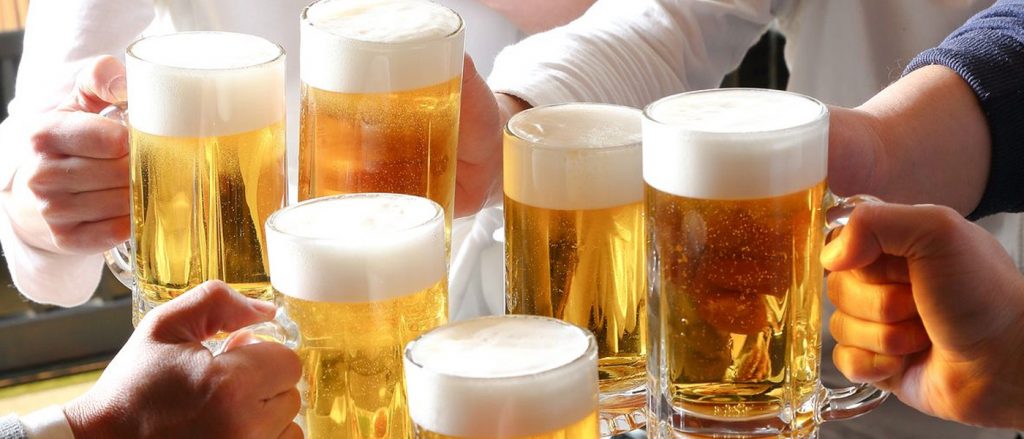For many, knowing if you are actually an alcoholic can be confusing. Often, people are in denial and do not want to admit they have a drinking problem, or they simply do not want to believe they actually have alcoholic drinking tendencies. It is not commonly known what actually defines alcoholic drinking, and there are several different types. The “normal” amount to drink is actually far less than what people normally accept to be “normal.”
According to the Dietary Guidelines for Americans, moderate drinking is defined as 1 drink per day for women, and 2 drinks per day for men. More than this may not necessarily mean you are an alcoholic, but it can mean you are drinking more than is considered healthy. Even if you don’t drink every day, you could still be engaging in alcoholic drinking which could escalate to full-blown alcohol dependency.
In the Diagnostic and Statistical Manual of Mental Disorders (DSM–5), there are 11 symptoms of alcohol use disorder. If someone displays 2-3 of these symptoms they may have a mild disorder, 4-5 symptoms means a moderate disorder, and 6 or more means severe alcoholism. If you think you might be engaging in alcoholic drinking, try taking this quick quiz from the DSM-5:
- Alcohol is often taken in larger amounts or over a longer period than was intended.
- There is a persistent desire or unsuccessful efforts to cut down or control alcohol use.
- A great deal of time is spent in activities necessary to obtain alcohol, use alcohol, or recover from its effects.
- Craving, or a strong desire or urge to use alcohol.
- Recurrent alcohol use resulting in a failure to fulfill major role obligations at work, school, or home.
- Continued alcohol use despite having persistent or recurrent social or interpersonal problems caused or exacerbated by the effects of alcohol.
- Important social, occupational, or recreational activities are given up or reduced because of alcohol use.
- Recurrent alcohol use in situations in which it is physically hazardous.
- Alcohol use is continued despite knowledge of having a persistent or recurrent physical or psychological problem that is likely to have been caused or exacerbated by alcohol.
- Tolerance, as defined by either of the following: a) A need for markedly increased amounts of alcohol to achieve intoxication or desired effect, or b) A markedly diminished effect with continued use of the same amount of alcohol.
- Withdrawal, as manifested by either of the following: a) The characteristic withdrawal syndrome for alcohol b) Alcohol (or a closely related substance, such as a benzodiazepine) is taken to relieve or avoid withdrawal symptoms.
What is Mild Alcoholic Drinking?
Mild alcoholic drinking may begin to affect your life negatively. You may embarrass yourself in front of family or loved ones. You might have been told on occasions to watch your drinking. You also might be bored when you aren’t drinking. This type of drink, if caught early, is easier to manage. There are no withdrawals and medical detox probably isn’t necessary. Alcoholism is a progressive illness though, so it might be wise to get it under control early.
What is Moderate to Severe Alcoholic Drinking?
Moderate or severe alcoholic drinking may start to have a very bad impact on your life. You may lose jobs, money, get DUIs, ruin relationships, etc. At this point, the alcoholic begins to develop a dependence in the body. This means the body cannot function properly without alcohol. This condition is very dangerous and requires medical detoxification. When alcoholic drinking is severe, it can be very hard to quit. Cravings are often very intense, and one may benefit from rehab and/or a 12 step fellowship. There is a lot of support out there for people looking to stop their drinking problem. There are even Moderation Management meetings and SMART recovery meetings (a secular fellowship opposed to AA).
What is Binge Drinking
The National Institute on Alcohol Abuse and Alcoholism defines binge drinking as bringing one’s blood alcohol level to .08 or higher. This occurs in women at about 4 drinks in two hours, and 5 drinks for men. Binge drinking is extremely popular, especially on college campuses. Though common, binge drinking is not healthy and is a form of alcoholic drinking. Binge drinking too often can lead to an increase in tolerance and possibly an alcohol dependence. Those who binge drink from a young age are far more likely to develop an alcohol use disorder.
Cutting down on drinking early will help prevent developing a disorder. It is a social norm to binge drink regardless of its hazards, and though simply binge drinking on occasion does not define an alcohol use disorder, it can easily manifest into one. If you binge drink, try to moderate and drink water in between drinks. Binge drinking multiple times a week can quickly lead to a more serious problem and may lead to more “yes” answers on the list above.
In Need of Healing From Addiction?
Sometimes when we’re deep in the thick of addiction and alcoholism, we get attached to the chaos and drama that unfolds everywhere. We start getting to a point of pitying ourselves and thinking we deserve to be a slave to the drugs and alcohol as if we crave the negativity. Nobody deserves to be slaved underneath chemical dependency. If you or a loved one is struggling with chemical dependency and are ready for help, call 1-866-433-1992 or visit www.anylength.net. We are ready to give you any suggestions possible and set you or your loved one on a path that we can all be proud of.
